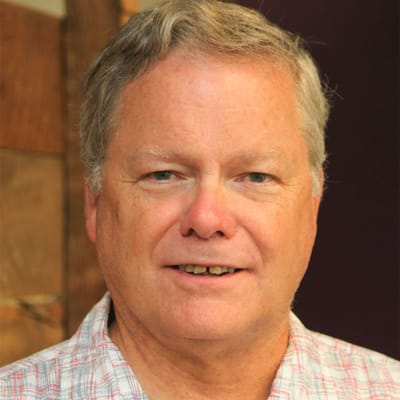Mark Thompson
Author
During the Civil War, the U.S. government seized the home of Robert E. Lee, commanding general of the rebel forces. The federal government converted its expansive grounds into a hallowed ground for the nation’s military heroes.
The government called their new final resting place Arlington National Cemetery. There was no thought given to calling it Robert E. Lee National Cemetery. Based on the same logic, there are no U.S. military posts named Fort Hitler, Fort Ho Chi Minh or Fort Osama bin Laden, either.
So why does the U.S. Army maintain forts named for Confederate officers Beauregard, Benning, Bragg, Gordon, A.P. Hill, Hood, Lee, Pickett, Polk, and Rucker? Among other qualities, the nine Confederate generals and a colonel include the head of its army (Lee, again), the reputed Georgia chief of the Ku Klux Klan, and the commander whose troops fired the opening shots of the Civil War.

Following the recent violence in Charlottesville—where protestors seeking to halt the removal of a Lee statue from a city park led to the death of a 32-year-old woman who supported taking it down—the Army’s acquiescence in naming its posts for Confederate officers will be revisited.
Why does the U.S. Army maintain forts named for Confederate officers Beauregard, Benning, Bragg, Gordon, A.P. Hill, Hood, Lee, Pickett, Polk, and Rucker?
Not only did Charlottesville want to remove the statue—an action being challenged in court by opponents—in June the city council changed the name of the park where it currently stands from Lee Park to Emancipation Park. Similar steps to remove, peacefully or otherwise, statues honoring Confederates are happening in Florida, Kentucky, Maryland, North Carolina and Tennessee.
Like the Charlottesville statue of Lee atop his steed Traveller (which went up in 1924), these Army installations were named for Confederate heroes long after the Civil War. Many were named in the first half of the 20th Century, when Jim Crow laws were common in southern states bent on continuing segregation. All 10 are located in the states of the old Confederacy, stretching from Virginia to Texas.

When this issue came up in 2015, the service said it had no intention of changing the forts’ names. “Every Army installation is named for a soldier who holds a place in our military history,” the Army said. “Accordingly, these historic names represent individuals, not causes or ideologies. It should be noted that the naming occurred in the spirit of reconciliation, not division.”
But, generations after many of these posts were named, reconciliation can boomerang. Even for the Army, times change. Indeed, the Army’s reliance on Confederate names is particularly unseemly, given that it has always been, by far, the service with the most African-American troops. For decades, even as the nation has become more enlightened on racial matters (remember: the military was segregated when these posts were named), untold thousands of black soldiers have readied for war on soil honoring their ancestors’ oppressors. Yes, there would initially be costs and confusion associated with new names, but they’d be small change in a bureaucracy that spends nearly $2 billion a day.
The nation’s other military services don’t have this historical baggage. The Air Force, Marines and Navy tend to name their outposts based on simple geography or for revered individuals. Andrews Air Force Base, for example, is named for the three-star Army general who helped create the Air Force. The Marines named Camp Lejeune to honor their 13th commandant. And the Navy’s Whiting Field is named for a pilot Orville Wright taught to fly.

That isn’t to suggest that the other services don’t run afoul sometimes. The Navy, most recently, has come under fire for naming some of its support ships—not warships, mind you—for labor organizer Cesar Chavez (a Navy veteran), civil rights leader Medgar Evers (an Army veteran), and gay rights pioneer Harvey Milk (also a Navy vet). And, more than a half-century ago, it did name submarines outfitted with long-range nuclear missiles for Robert E. Lee and Stonewall Jackson. But, unlike Army posts, Navy vessels rust and eventually are scrapped (Lee, 1991; Jackson, 1995). They aren’t a forever sucking chest wound the nation should have put behind it more than a century ago.
This debate last bubbled up two years ago during the national tug-of-war over whether or not to remove the Confederate flag from the grounds of the South Carolina capitol. Ultimately, the state legislature ordered it lowered, for keeps. Lawmakers took the action following the murder of nine black churchgoers just over 100 miles away in Charleston, S.C., at the hands of a white supremacist who had posed with the stars and bars.
When I wrote about this back then, the Army had this formal explanation of how its bases got their names: “It was common for camps and forts to be named after local features or veterans with a regional connection,” the Army Center of Military History said on its website. “In the southern states they were frequently named after celebrated Confederate soldiers.” (“Celebrated”? Not all who wore the uniform agreed.)

But since that last nomenclature skirmish, the Army has airbrushed that part of its history into oblivion. The relevant passage now reads: “The names usually, but not always, reflected some regional connection to its location, and usually with a historic military figure significant to the area.”
The word “Confederate” has gone AWOL from the Army’s official history.
If the Army can expunge such a straightforward explanation for why some of its posts are named for American traitors, it might as well finish the job and excise the stain those names represent from the bases themselves.

Sent Saturdays
